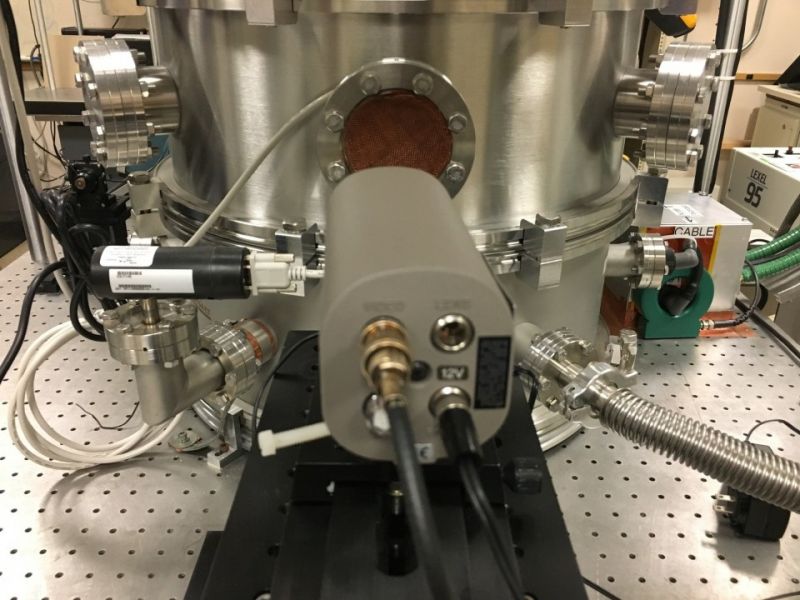Water Purification with Electricity and Plasma
Published on by Water Network Research, Official research team of The Water Network in Technology
Two Glenn researchers and a University of Michigan colleague have found what they say is an economical and ecological way to cleanse water with electricity and plasma.
It eliminates the need for filters, chemicals, trucks to deliver those chemicals and silos to store them.

Using this chamber, NASA Glenn scientists have purified water with electricity and plasma. Photo by Grant Segall/The Plain Dealer.
SageGuard Solutions recently purchased the technology from NASA.
The technique removes contaminants that have blighted water in Lake Erie and elsewhere, including bacteria, viruses, parasites, fungi, algae, drugs and waste.
"This is the future," says Isaiah Blankson, who developed the technique with Glenn colleague Grigory Adamovsky and Ann Arbor's John Foster. "Water systems are going to be based on plasma."
Plasma is a fourth state of matter more common than the better known gas, liquid and solid states. Glenn's technique makes it with electricity.
Ray Erker, CEO of the new SageGuard Solutions, says he has already lined up about $4 million worth of prospective sales, mostly to treat industrial waste water. But the technique can also purify water for drinking and cooking, and Erker says he's had inquiries for those purposes.
The new technology can supplement older technologies or replace them.
Meanwhile, the scientists continue to study the technique for other uses, such as pasteurizing milk, disinfecting crops and ridding ballast water of invasive species such as zebra mussels. They hope to develop purification equipment small enough to be taken on camping trips to treat water from streams.
According to the scientists, the nation has struggled with rising contaminants in water, including antibiotics and resistant bacteria. Chlorine has fallen into disfavor for treatments because of links to cancer.
Scientists have experimented for decades to purify water with electricity and plasma. But Blankson says past techniques took too much energy and heated the water too much.
Glenn's team uses up to 100,000 volts for just two nanoseconds, or two billionths of a second. The water rises no more than one degree Celsius.
Erker says the technology has a wide market. "As we did the research, it became more obvious that water was the biggest problem in the world and the biggest opportunity."
Read more at: Cleaveland
Media
Taxonomy
- Decontamination
- Pharmaceuticals Waste
- Filtration
- Technology
- Plasma
- Filtration Solutions
- Contaminant Removal
- Filtration
- water treatment
- Water Treatment & Control
- Contaminant Control
1 Comment
-
Is the technology commercially available? Pls send details to gordon@gurumanzi.com